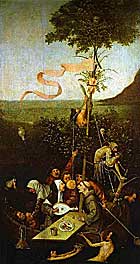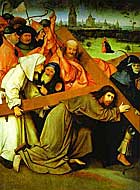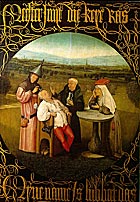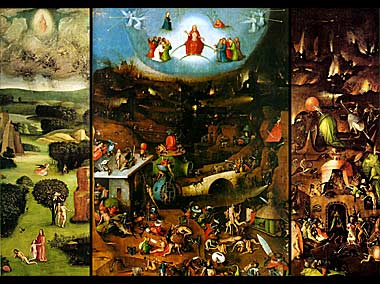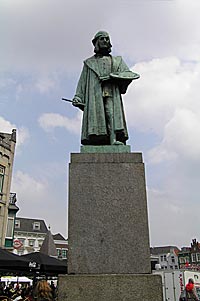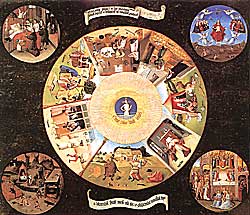| The Morbid, Dutch, Renaissance Artist - Hieronymus Bosch
By Annette Labedzki
Hieronymus Bosch was a renowned Dutch painter of fifteenth and sixteenth centuries. His real name was Jheronimus (or Jeroen) Anthonissen van Aken and El Bosco in Spanish. Hieronymus Bosch was born sometime around 1450 in a family of artists & artisans, and therefore, grew up learning several art skills. His childhood was spent in the city of 's-Hertogenbosch or 'Den Bosch,' which had a number of glassmakers. They deeply inspired Hieronymus Bosch vis-a-vis his artistry. In 1463, a major fire destroyed about 4000 homes in the town. This incident is believed to have influenced young Bosch, resulting in his usage of the images of demons, half-human animals, and machines in his paintings. The objective might have been to create fear and confusion in the minds of people.
Hieronymus Bosch lived during the 'Dark Ages,' when the world was undergoing a transition from the Gothic to the Renaissance period. During this phase, fear and violence were rampant, and the church was in a position of power. Uncontrolled and the ruthless rulers of the era compounded the woes of the common person. Bosch was a sensitive artist with a keen observation. He could lift these images from everyday life onto his canvas for painting. Hieronymus Bosch's works of art are mainly the morbid interpretations of hell, death, sin, and folly. His works were much ahead of his times, as he specialized in the use of 'Symbolism' and 'Iconography.' A few examples of these symbols include 'fruit' for carnal pleasure, 'flames' for the fires of hell, 'mussel shells' for infidelity, 'ice skaters' for folly, 'eggs' for sexual creation, and 'ears' for gossip.
At the age of thirty, around 1479-81, Bosch married Aleyt Goyaerts van den Meervenne, the daughter of one of the wealthiest families in 's-Hertogenbosch. The couple then moved to Oirschot. He later became a member of the famous religious group, 'The Brotherhood of Our Lady,' of 's-Hertogenbosch. Famous among Hieronymus' works are "The Garden of Earthly Delights," a 'Triptych' that was filled with the symbols of sin. His other works include "Death and the Miser," "The Ship of Fools," "Christ Carrying the Cross," where Bosch expresses his views on religion, "The Haywain," and "The Temptation of St. Anthony."
Bosch sold his paintings to illustrious buyers and received hefty commissions from them. When he became very successful, Hieronymus changed his surname from van Aken to Bosch, in order to propagate the name of its native place, 's-Hertogenbosch. Bosch was fascinated with religion, politics, astrology, black & white magic, and alchemy. His fascinations remained at an intellectual level and were never experimental. Hieronymus Bosch died on August 09, 1516. His works are considered an inspiration to the 'Surrealist' movement that started in the twentieth century.
Annette Labedzki received her BFA at the Emily Carr College of Art and Design in Vancouver, B.C. Canada. She has more than 25 years experience. She is the founder and developer of an online art gallery featuring original art from all over the world. It is a great site for art collectors to buy original art. Is is also a venue for artists to display and sell their art . Artists can join for free and their image upload is unlimited. Please visit the website at http://www.labedzki-art.com
Article Source: http://EzineArticles.com/?expert=Annette_Labedzki
http://EzineArticles.com/?The-Morbid,-Dutch,-Renaissance-Artist---Hieronymus-Bosch&id=1802467 |

